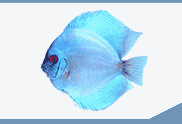

 |
||||||||||||
 |
||||||||||||
| Sand Substrates | ||||||
| Ralph Cote | ||||||
Sand is just a range of particle sizes and can include anything from coral particles to man-made substances. Gravel is larger and silt is smaller. For a discus tank though, it is mainly silica sand that is used as a substrate. It is virtually inert and won't usually affect your water parameters especially with our water changes. Silica actually includes a large group of rock materials -- quartz is a type of silica. The color of the sand is dictated by the type of rock that the sand was formed from. Many sands are actually a mixture, sometimes even including precious stones. I like the white sand, I think it looks good, makes the fish look good, and that's what the Amazon river bed has. The key to aquarium sands is the particle size. Many purchased sands are too small to be practical. The problems with fine sand (such as sizes 16 and 20) are the compaction of the sand leading to anaerobic activity and the vacuuming up of the sand with the solid wastes. The cleanest I have been able to keep my tanks is with a thin layer (1/2" to 1") of large particle sands. I can vacuum all the way to the bottom piece of glass without sucking up the sand too. Generally the solid wastes stay on top of the sand and collects in the tank corners. In that case you can use a vacuuming technique where you glide the vacuum above the sand, getting the wastes and leaving the sand. Every hardware store has sand (for concrete, playgrounds, etc.). It is usually mixed in particle size but generally very fine and brown. Walmart used to sell white playground sand but I haven't seen it in awhile. Swimming pool supply stores sell white sand for pool filters but it is also very fine (they formerly used larger grains). Sand blasting supply stores usually have a variety of sand sizes and materials (including crushed safety glass!) though not usually white sand. In all of these places, the prices run around $10 USD for 50 pounds. I've had the best luck at local fish stores (other areas of the world of course may be different). I've found two types of white, large grained sands (including one coated with epoxy) but they have a bunch of different colors. It runs about $1 per pound though but sometimes they will give discounts for bulk. Don't buy the coral sands though, they will increase water hardness. Do the vinegar test if you are in doubt (put a couple of drops of vinegar on the sand and if it bubbles, don't use it). The internet I'm sure has various sands at good prices, but shipping would make it costly I imagine. The biggest problems with sand: it doesn't anchor plants very well and there are no nutrients for the plants in the sand. I've used lead weights wrapped around the plant base though. Others have had success with sand over Flourite, laterite, etc. and with thicker levels. |
 |
|||||
| About Us :: Message Board :: Chat | |||||
| Library :: Photo Gallery :: Links & Resources :: Breeders & Sponsors :: Merchandise | |||||
| Website designed by: EthanCote.com | © 2001-2004, SimplyDiscus.com. All Rights Reserved. | ||||